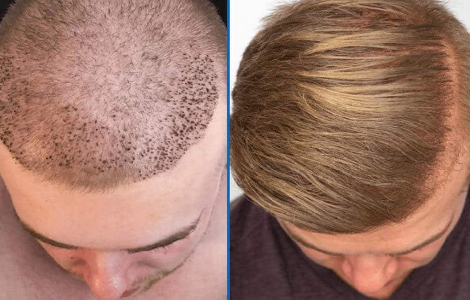
Hair transplantation is a surgical procedure for curing baldness or hair loss. Generally in hair transplant surgery, tiny patches of scalp are removed from the back and sides of the head and implanted in the bald spots in the front and top of the head. In hair transplant surgery individuals hair follicles are moved from one part of the body (the donor site) to bald or balding parts (the recipient site). Since hair naturally grows in follicles that contain grouping of 1 to 4, todays most advanced techniques transplant these naturally occurring 1-4 hairs follicular units in their natural grouping. This hair transplant procedure is called follicular unit transplantation (FUT). There are two types of hair transplantation- strip harvesting, and follicular unit extraction (FUE).
A strip of scalp is removed under local anesthesia, the wound is then sutured back together and this piece of scalp tissue is then cut into small pieces, from which individual follicle is separated under magnification called “Follicles” or Grafts. These follicles or grafts are then transplanted back into the bald area of the patient’s head (recipient area). This method will leave a linear scar in the donor area, which is usually covered by the patient’s hair (if long) and almost invisible. The recovery period is around 2-weeks and will require the stitches to be removed by medical personnel.
Individual follicles of hair are removed under local anesthesia; this removal uses tiny punches of between 0.6mm and 1.25mm in diameter. Each follicle is then reinserted back in to the scalp in the bald area using a micro blade. Because individual follicles are removed, only tiny, punctate scars formation occurs, which is practically remain invisible. No suture removal is required.
FUE harvesting negates the need for large areas of scalp tissue to be harvested and can give very natural results with little or no scarring. The surgeon then uses very small micro blades or fine needles to puncture the sites for receiving the grafts, placing them in a predetermined density and pattern, and angling the wounds in a consistent fashion to promote a realistic hair pattern by inserting the individual grafts in natural angle & place.
© 2022 Monjoven | Designed by Webinfotech